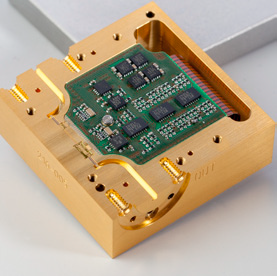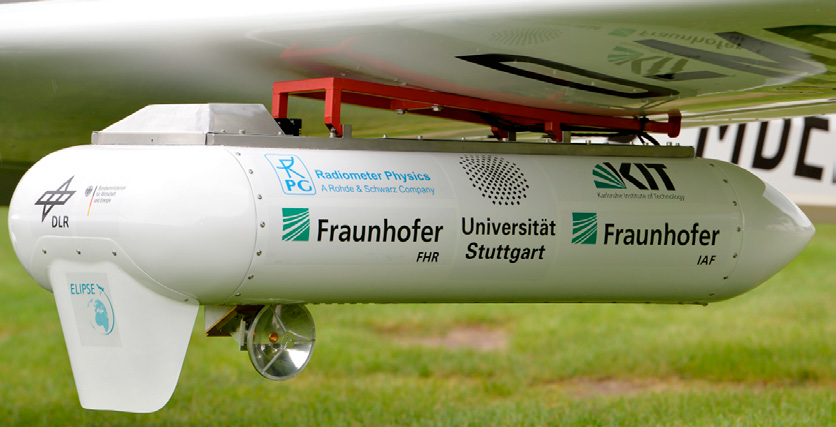Fast Internet high above the clouds
Fast Internet on a plane – a dream of both airlines and passengers. So far, it has remained but a dream due to the low strength of data communication signals between the ground and the aircraft. But there is a solution in sight: signals with a transmission rate of 8 Gb/s can now be sent between a plane and a ground station.


To achieve this high data rate, researchers are using the radio frequency range between 71 and 76 GHz for the first time for an air-to-ground radio connection. Within this range, wide bandwidths are available to achieve multi-gigabit data rates.
This technology could be used in the future to offer broadband Internet and video-on-demand (VoD) on passenger flights. High-definition videos can be transmitted continuously and without compression from a plane, an earth observation satellite, or a drone to the ground. The data rate attained allows for, say, simultaneous transmission of up to 600 different 4k video streams (approx. 16 Mbit/s). Global satellite networks that are linked to terrestrial fiber-glass and wireless networks can make broadband Internet available worldwide and allow for the data-intensive services that form the Internet of Things.
The successful experiment was part of the ELIPSE research project. Within the experiment, a plane was equipped with a powerful transmitter that uses what is known as the “E-band” and flew in circles at an altitude of about 1000 m (3300 ft) and in radius of 5–12 km around the receiving station. A specially developed antenna tracking system on the ground ensured that the relatively highly directional antenna beams of the transmitter and receiver remained directed towards one another at all times.
Researchers from the Fraunhofer Institute for Applied Solid State Physics IAF were involved in the development of the highly linear transmission channel and the ultra-low-noise receiver. Special GaN transmission amplifiers with an output rating of up to 2 W and low-noise reception amplifiers with HF noise values of less than 2 dB allow the data rate to be significantly increased.
Who’s involved?
University of Stuttgart • Karlsruhe Institute of Technology (KIT) • Radiometer Physics GmbH • Fraunhofer Institute for Applied Solid State Physics IAF • Fraunhofer Institute for High Frequency Physics and Radar Techniques FHR
Sponsors:
German Aerospace Center (DLR) • German Federal Ministry for Economic Affairs and Energy
Last modified: